What is Wi-Fi: Understanding Popular Wireless Protocol for IoT
Introduction to Wi-Fi
Wi-Fi has become one of the most integral parts of modern communication systems, and it plays an essential role in the development and deployment of IoT (Internet of Things) solutions. Whether it’s connecting a smart thermostat to the cloud or controlling smart lighting through your phone, Wi-Fi serves as a critical medium.
In this article, we explore the foundation of Wi-Fi, its working mechanism, role in IoT, different standards, advantages, limitations, and practical use cases, providing you a comprehensive beginner-to-expert guide for 2025 and beyond.
What is Wi-Fi? (Beginner-Friendly Definition)
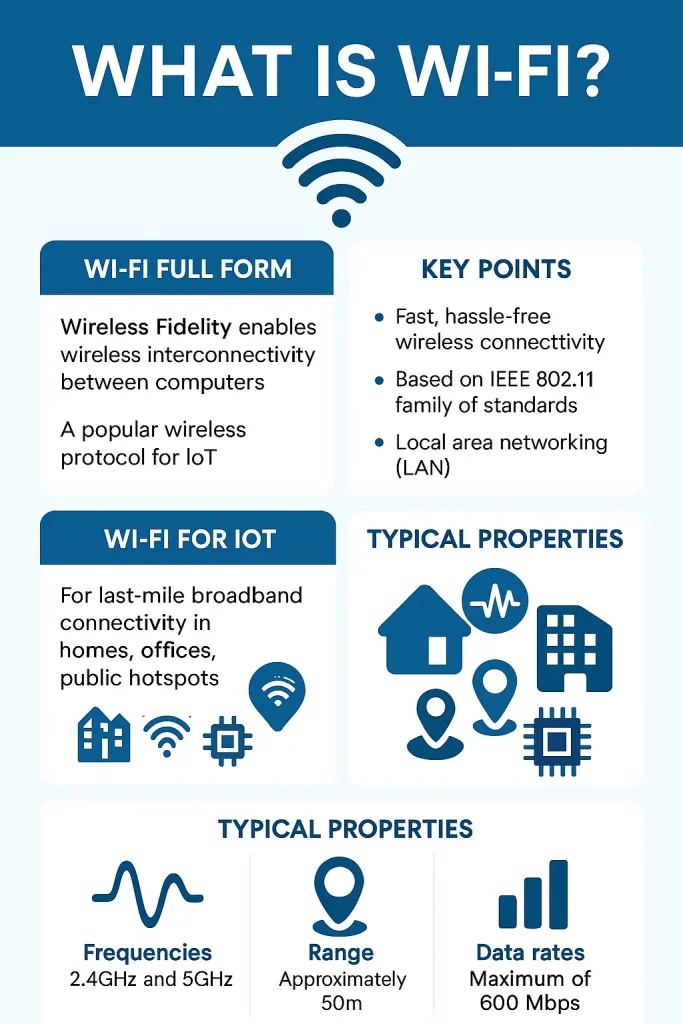
Wi-Fi stands for Wireless Fidelity. It is a technology that enables wireless communication between electronic devices. With Wi-Fi, devices can exchange data or connect to the internet using radio waves instead of physical cables. It allows laptops, smartphones, IoT devices, and other wireless-enabled devices to connect to a local network or the internet via an access point or router.
A simple way to understand Wi-Fi is: it’s a way for multiple electronic devices to communicate wirelessly within a certain range.
Key Highlights:
- Wi-Fi enables wireless local area networking (WLAN).
- It allows for internet access through a wireless access point (router).
- It can also be used for direct communication between devices (peer-to-peer).
WiFi Full Form & Technical Basis
Full Form:
Wi-Fi = Wireless Fidelity
Technical Explanation:
Wi-Fi is based on the IEEE 802.11 standard family. These standards define how wireless devices communicate over the 2.4 GHz and 5 GHz frequency bands. Each version (802.11b/g/n/ac/ax) introduces enhancements in speed, range, security, and data handling capabilities.
Wi-Fi operates by sending and receiving radio signals using antennas. These signals are picked up by compatible devices (such as laptops or IoT nodes), allowing them to connect to each other or to a broader network (typically the internet).
How WiFi Works for IoT Communication
In IoT ecosystems, devices need a reliable and fast communication medium. Wi-Fi offers high-speed, medium-range, and high-bandwidth wireless communication—ideal for many IoT use cases, particularly in indoor environments where power supply isn’t a major concern.
Working Process:
- IoT device (e.g., ESP32) has built-in Wi-Fi or is connected to a Wi-Fi module.
- It connects to a Wi-Fi Router (Access Point).
- The router provides a gateway to the internet or cloud services.
- Data is transmitted from the IoT device to the cloud and vice versa, allowing remote monitoring/control.
Example:
A smart air conditioner uses Wi-Fi to:
- Receive temperature control commands from a mobile app.
- Send performance data and alerts to the cloud.
- Enable integration with smart assistants like Alexa or Google Assistant.
Key Features of WiFi in IoT
| Feature | Details |
|---|---|
| Speed | Ranges from 11 Mbps (802.11b) to 9.6 Gbps (Wi-Fi 6) |
| Range | Around 50–150 meters indoors |
| Security | WPA2, WPA3 encryption standards |
| Power Use | High (Not ideal for battery-powered devices) |
| Compatibility | Works with most existing devices and infrastructure |
| Bandwidth | Supports large data transmission (HD video, telemetry) |
WiFi Standards (IEEE 802.11 Family Explained)
Wi-Fi has evolved with several versions of the IEEE 802.11 standards. Each standard defines specific speeds, frequencies, modulation techniques, and use cases.
Major Versions:
- 802.11b: 11 Mbps, 2.4 GHz
- 802.11g: 54 Mbps, 2.4 GHz
- 802.11n: 600 Mbps, 2.4/5 GHz, introduced MIMO
- 802.11ac (Wi-Fi 5): 1.3 Gbps+, 5 GHz only
- 802.11ax (Wi-Fi 6): Up to 9.6 Gbps, 2.4/5 GHz, better efficiency
These standards differ in terms of speed, power consumption, and coverage area, making them suitable for various IoT and networking applications.
Technical Comparison of WiFi Standards
| Standard | Frequency | Max Speed | Year | Use Case |
|---|---|---|---|---|
| 802.11b | 2.4 GHz | 11 Mbps | 1999 | Legacy devices |
| 802.11g | 2.4 GHz | 54 Mbps | 2003 | Basic multimedia streaming |
| 802.11n | 2.4/5 GHz | 600 Mbps | 2009 | Smart homes, general IoT |
| 802.11ac | 5 GHz | 1.3 Gbps | 2013 | HD streaming, surveillance |
| 802.11ax | 2.4/5 GHz | 9.6 Gbps | 2019 | Dense IoT networks, WiFi 6 |
Pros and Cons of WiFi in IoT Applications
Pros:
- High data throughput
- Readily available in homes/offices
- Compatible with most consumer IoT devices
- Easy to set up and scale
Cons:
- High power consumption
- Susceptible to interference in crowded areas
- Limited range compared to cellular or LPWAN
- Not ideal for outdoor remote IoT applications
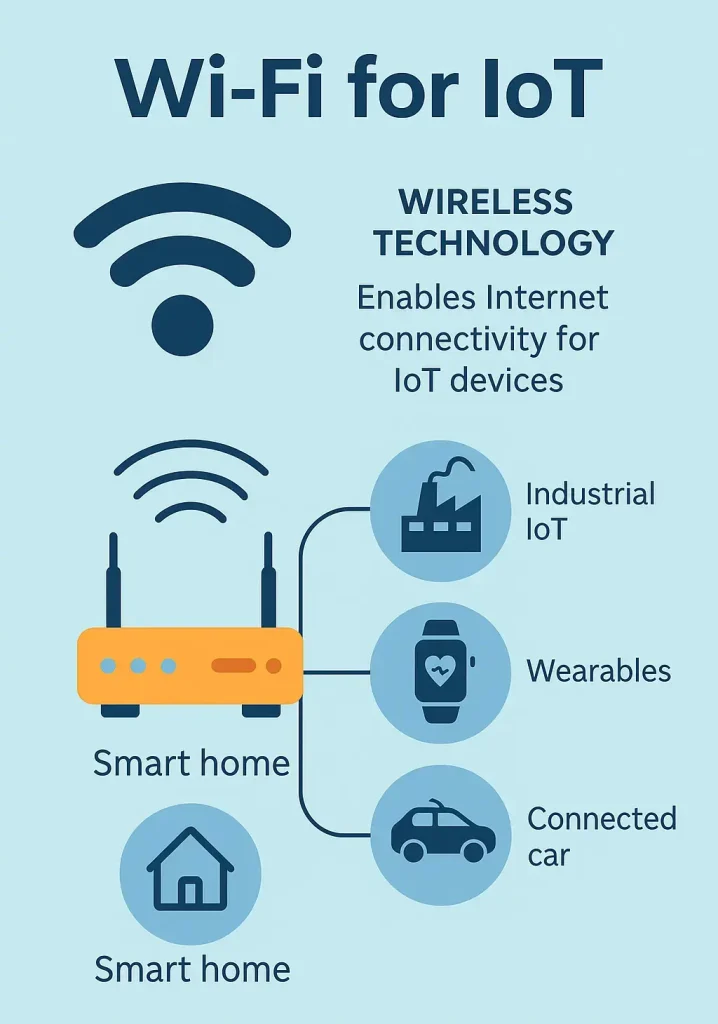
Popular WiFi IoT Modules
| Module | Features | Ideal Use Case |
|---|---|---|
| ESP8266 | Low cost, WiFi enabled MCU | Entry-level IoT projects |
| ESP32 | Dual-core, BLE + WiFi | Advanced smart home devices |
| NodeMCU | ESP8266-based dev board | Prototyping with web servers |
| Arduino + ESP Shield | Adds WiFi to Arduino | Educational IoT experiments |
These modules are widely used in DIY electronics, academic projects, and even some commercial applications.
Real-World Applications of WiFi for IoT
- Smart Homes: Lighting systems, TVs, thermostats, and appliances are WiFi-enabled.
- Healthcare: Wearables and patient monitors stream data to cloud portals.
- Retail: Smart PoS terminals and shelf sensors communicate over WiFi.
- Agriculture: Indoor greenhouses with WiFi-connected temperature and humidity sensors.
- Industrial IoT: Factory systems monitor equipment health in real-time using WiFi dashboards.
WiFi vs Other IoT Protocols
| Protocol | Speed | Range | Power Use | Best For |
|---|---|---|---|---|
| WiFi | High | Medium | High | Smart homes, cameras |
| BLE | Low | Short | Low | Wearables, short messages |
| Zigbee | Medium | Short | Low | Smart lighting |
| LoRaWAN | Low | Long | Very Low | Remote field sensors |
| NB-IoT | Medium | Very Long | Low | Industrial remote telemetry |
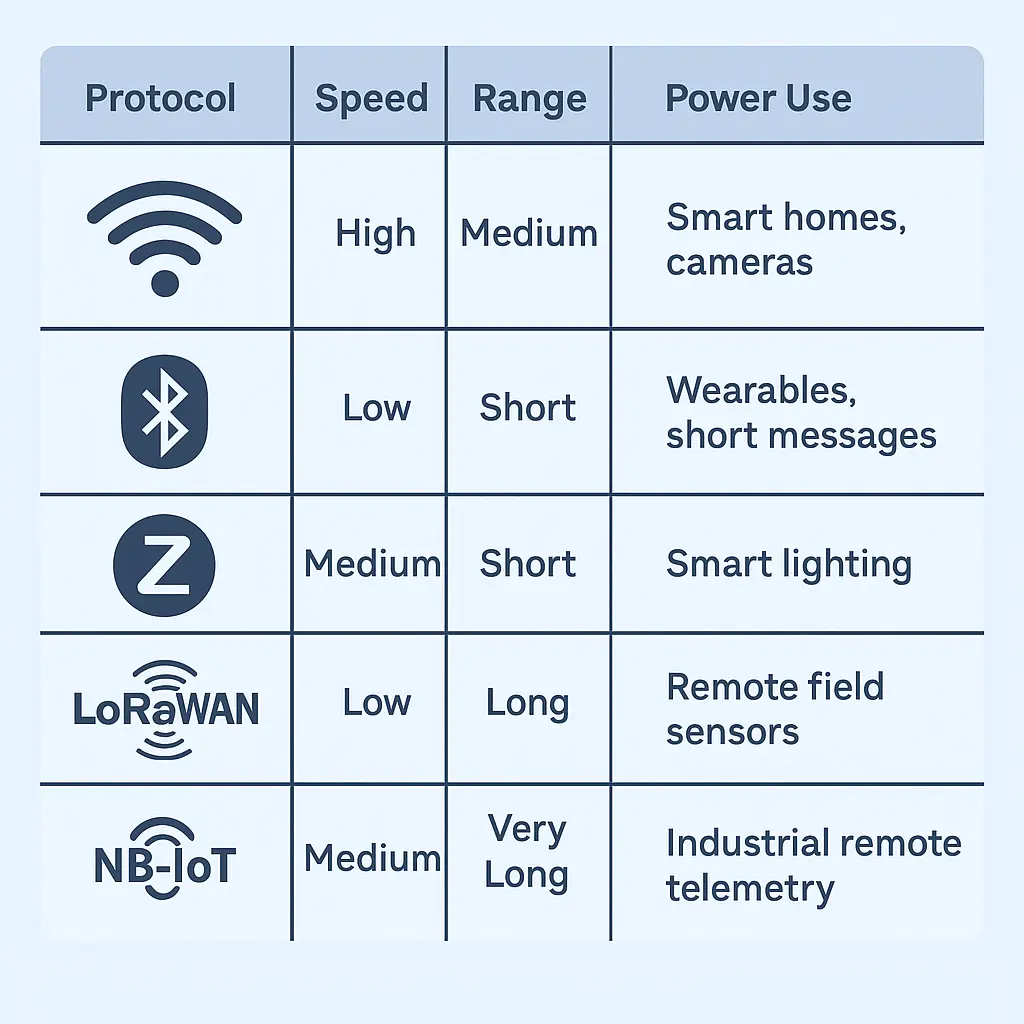
Summary
Wi-Fi remains a dominant wireless protocol due to its speed, availability, and compatibility with consumer devices. It is ideal for smart homes and commercial settings where power isn’t a concern. However, for outdoor or low-power applications, developers often opt for Zigbee, LoRa, or NB-IoT. Understanding the limitations and strengths of Wi-Fi helps developers choose the right technology for their IoT solutions.
See also: Wokwi Online Simulator: Simulate Arduino & ESP32 IoT Projects
FAQs: What is Wi-Fi and Its Role in IoT
Q1. What is Wi-Fi full form?
Wireless Fidelity
Q2. Is Wi-Fi good for battery-powered IoT devices?
Not ideal, due to high power consumption. Better options include BLE or Zigbee.
Q3. Can I use ESP32 without a router?
Yes, it can create its own soft access point for local communication.
Q4. What is the range of WiFi in IoT devices?
Typically 50–150 meters indoors, depending on interference.
Q5. Is Wi-Fi the same as the internet?
No, Wi-Fi is the wireless method to connect to a local network; internet is a service accessed through that network.
See also: Unlock the Top Communication Protocols for IoT (2025 Guide)
Ready to Explore More? Let’s Build Smarter Together!
🔔 Subscribe to Our YouTube Channel » for IoT video Tutorials.
🌐 Start Learning IoT Basics Now » and What is IoT? – Introduction to IoT and IoT Architecture: 4 Essential IoT Layers Simplified for Beginners on IoTDunia.com! and Check out Top IoT Applications in Real World – Smart Use Cases 2025, IoT career guide 2025, Best Projects on IoT for Beginners
👉 Have questions? Drop them in the comments!
💡 Start small, stay curious, and make your world smarter—one device at a time.





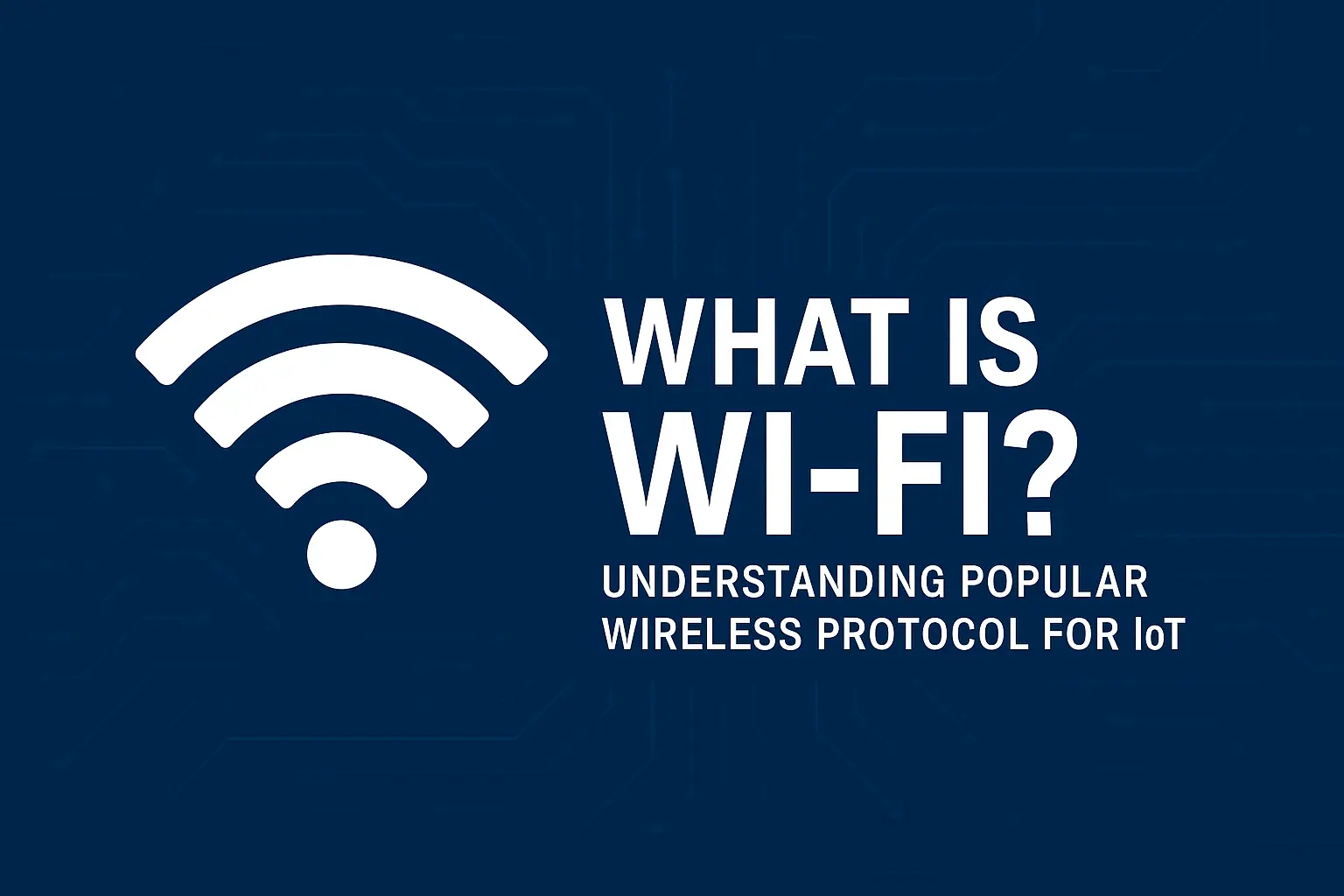


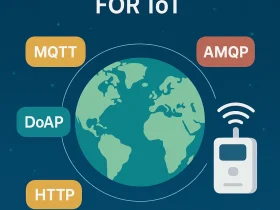

Leave a Review